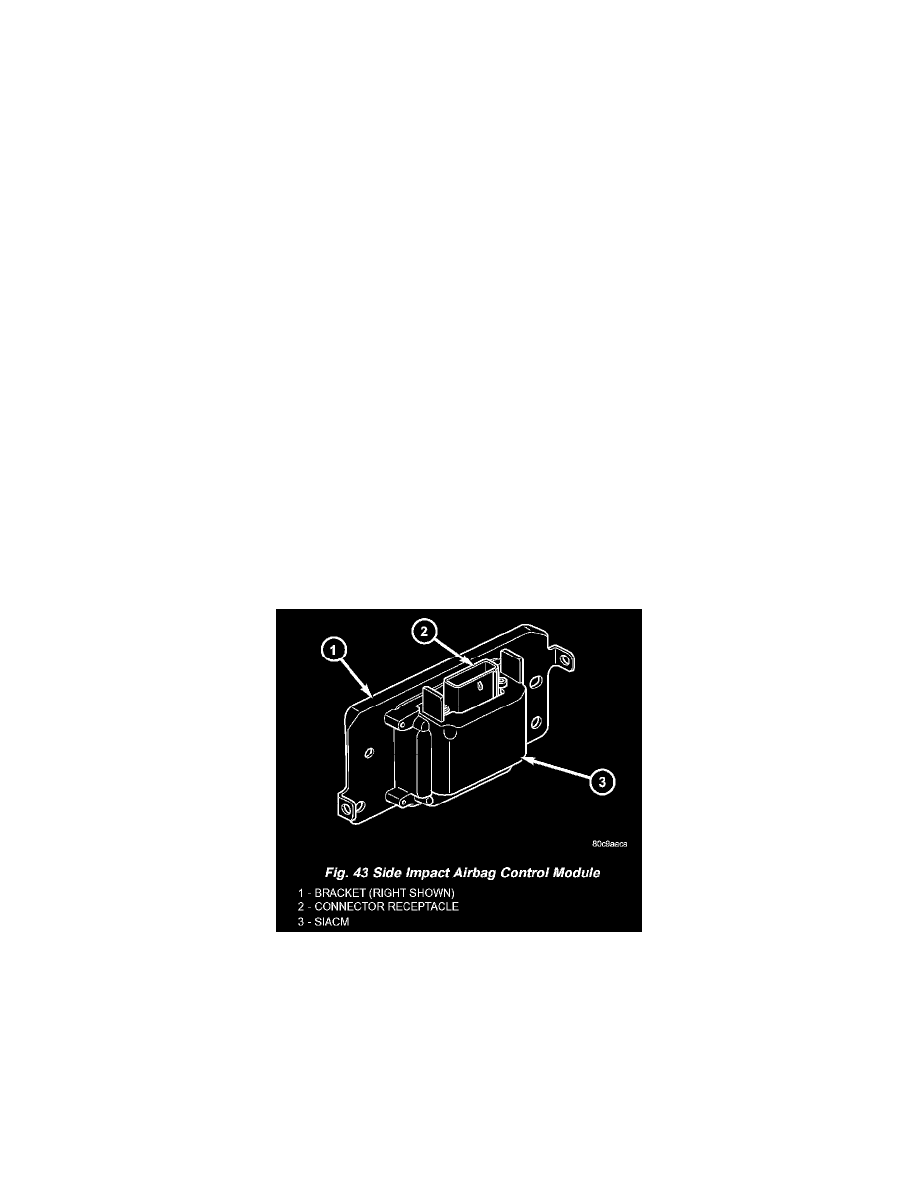Liberty Sport 2WD L4-2.4L VIN 1 (2002)

On models equipped with optional side curtain airbags, the ACM communicates with both the left and right Side Impact Airbag Control Modules (
SIACM) over the PCI data bus. The SIACM notifies the ACM when it has detected a monitored system fault and stored a DTC in memory for its
respective side curtain airbag system, and the ACM sets a DTC and controls the airbag indicator operation accordingly The ACM also monitors a
Hall effect-type seat belt switch located in the buckle of each front seat belt to determine whether the seatbelts are buckled, and provides an input
to the EMIC over the PCI data bus to control the seatbelt indicator operation based upon the status of the driver side front seat belt switch.
The ACM receives battery current through two circuits; a fused ignition switch output (run) circuit through a fuse in the Junction Block (JB), and
a fused ignition switch output (run-start) circuit through a second fuse in the JB. The ACM has a case ground through a lug on the bottom of the
ACM housing that is secured with a ground screw to the left side of the ACM mounting bracket. The ACM also receives a power ground through a
ground circuit and take out of the instrument panel wire harness. This take out has a single eyelet terminal connector that is secured by a second
ground screw to the left side of the ACM mounting bracket. These connections allow the ACM to be operational whenever the ignition switch is in
the Start or ON positions. The ACM also contains an energy-storage capacitor. When the ignition switch is in the Start or ON positions, this
capacitor is continually being charged with enough electrical energy to deploy the airbags for up to one second following a battery disconnect or
failure. The purpose of the capacitor is to provide backup supplemental restraint system protection in case there is a loss of battery current supply
to the ACM during an impact.
Two sensors are contained within the ACM, an electronic impact sensor and a safing sensor. The ACM also monitors inputs from two remote front
impact sensors located on the back of the right and left vertical members of the radiator support near the front of the vehicle. The electronic impact
sensors are accelerometers that sense the rate of vehicle deceleration, which provides verification of the direction and severity of an impact. The
safing sensor is an electromechanical sensor within the ACM that provides an additional logic input to the ACM microprocessor. The safing sensor
is a normally open switch that is used to verify the need for an airbag deployment by detecting impact energy of a lesser magnitude than that of the
electronic impact sensors, and must be closed in order for the airbags/seat belt tensioner to deploy. A pre-programmed decision algorithm in the
ACM microprocessor determines when the deceleration rate as signaled by the impact sensors and the safing sensor indicate an impact that is
severe enough to require front supplemental restraint system protection and, based upon the status of the seatbelt switch inputs and the severity of
the monitored impact, determines what combination of driver seat belt tensioner and/or front airbag deployment is required for each front seating
position. When the programmed conditions are met, the ACM sends the proper electrical signals to deploy the driver seat belt tensioner and/or the
multistage dual front airbags at the programmed force levels.
The hard wired inputs and outputs for the ACM may be diagnosed and tested using conventional diagnostic tools and procedures. However,
conventional diagnostic methods will not prove conclusive in the diagnosis of the ACM, the PCI data bus network, or the electronic message
inputs to and outputs from the ACM. The most reliable, efficient, and accurate means to diagnose the ACM, the PCI data bus network, and the
electronic message inputs to and outputs from the ACM requires the use of a DRBIII scan tool. Refer to the appropriate diagnostic information.
Fig.43 Side Impact Airbag Control Module
SIDE IMPACT AIRBAG CONTROL MODULE
On vehicles equipped with the optional side curtain airbags, a Side Impact Airbag Control Module (SIACM) and its mounting bracket are secured
with four screws to the sill panel at the base of each B-pillar behind the lower B-pillar trim. Concealed within a hollow in the center of the die cast
aluminum SIACM housing is the electronic circuitry of the SIACM which includes a microprocessor and an electronic impact sensor. The SIACM
housing is secured to a stamped steel mounting bracket, which is unique for the right or left side application of this component. The SIACM
should never be removed from its mounting bracket. The housing also receives a case ground through this mounting bracket when it is secured to
the vehicle. A molded plastic electrical connector receptacle that exits the top of the SIACM housing connects the unit to the vehicle electrical
system through a dedicated take out and connector of the body wire harness. Both the SIACM housing and its electrical connection are sealed to
protect the internal electronic circuitry and components against moisture intrusion.
